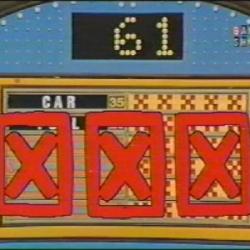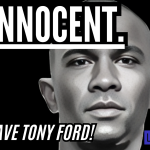The paper ran a long piece yesterday called "Music attracts teens to hate groups."
The local angle was a guy named Robert T. Huber, a hatecore musician who lives in Newark, Del., where he's a doctoral candidate at the University of Delaware. Like most doctoral candidates, he teaches and grades papers. That's a worrisome thought if you're an undergrad physics student at UD and you're black, Jewish, Catholic, gay, Asian, Hispanic or even white but not, you know, a racist moron.
Anyway, Lee Williams reports that Huber's racist band, Teardown, played a recent concert/hate-rally called "Uprise 2006," which was held Jan. 28 in Middletown, Pa. And Williams does a good job providing context, explaining how such bands and concerts have become the recruiting strategy for hate groups, and that these groups are actively recruiting here in the Delaware Valley. (Correction: That's Middletown Borough, near Harrisburg, not the Township next door to Everybody's Hometown, where I sit writing this. This American History X stuff was still too close to home.)
This article is a good example of reporting that's fair and accurate and, therefore, not "balanced." The paper, implicitly and occasionally explicitly, takes sides.
Newspapers do this all the time. Most often, as in this case, they do so when the choice of sides is obvious. But the truth is that newspapers are for certain things and against other things.
Most newspapers, for example, because they are newspapers, are active and sometimes aggressive proponents of the freedom of the press. When that freedom is at stake in a story, newspapers may report "both sides" of the question, but they do so making it clear that one side is right and the other side is wrong. From the newspapers' perspective, access to public records is a Good Thing, and that perspective shapes their reporting on the issue. They may even offer awards for reporters and editors who demonstrate a "commitment to the First Amendment and Freedom of Information."
Newspapers are also in favor of charity. Donations to charity are invariably reported as good news. Newspaper also puff Good Causes, helping to promote benefit dinners, races, festivals and every variety of -thon with articles touting such events before, during and after they occur. Newspapers are often joint-sponsors of such events. Many even also run their own separately incorporated charitable nonprofits. This is a noncontroversial stance, but it is a stance — a taking of sides.
Another stance explicitly held by most newspapers is demonstrated by the article above from Sunday's paper. Newspapers are against racist hate groups. Reporting on such groups assumes the perspective that their successes, like traffic deaths, are a Bad Thing to be reported as bad news. Articles like the one above include quotes from people at the Southern Poverty Law Center and the Anti-Defamation League not just to provide "balanced" comments from the other side, but to provide corrective comments from the right side. This isn't the typical other-handism of lazy modern journalism in which "balance" trumps accuracy. These advocates of tolerance are quoted to tell us what we can do — "we" here being an undefined and undifferentiated ideal of the larger community, of which the paper considers itself a part and which the paper assumes ought to do something.
This stance against hateful, hate-filled racist groups is an expression of newspapers' explicit commitment to "diversity." The key words there are "commitment to" — as in taking sides. This commitment arises, I think, from several causes, some of which are simply smart business sense. If you want to reach — and sell to — as many readers as possible, you have to include everybody. That desire to cast a wide net and reach diverse readers has also led newspapers to promote more diversity within the newsroom, which has, in turn, reinforced this commitment to "diversity" in their reporting. (A cynic would note that there are more baldly economic reasons for this limited, but real, increase in diversity within newspapers, such as the fear of getting sued, but however mixed the motives, it's happening.)
This commitment also arises from the sense that it is the Right Thing To Do. No, really. It is naive to believe that good intentions, at face value, wholly explain the actions of any individual or institution, but it can be just as inaccurate to disregard them completely. And good intention, the desire to do the right thing, is a part of why newspapers are committed to "diversity."
This act of conscience is, I think, partly motivated by residual guilt — the regret that newspapers were slow to take sides during the 1950s and '60s as the civil rights movement changed America. In 1965, Frank Gaebelein was a 70-year-old, white, evangelical academic working as a correspondent for the conservative, white evangelical Christianity Today magazine. He traveled to Selma, Ala., to cover the rabble-rousing march being led by Martin Luther King Jr. After taking stock of the situation, Gaebelein decided he had no choice but to join the march. This violated the idea of journalistic neutrality and also violated the timid, wait-and-see approach of his editors. Generally it got him in a lot of trouble at the time. But it also meant that Gaebelein got the story right, when so many others were still getting it wrong. Looking back, many editors and reporters wish that their newspapers had had that kind of wisdom and courage. The contemporary commitment to "diversity" is, in part, an expression of the desire not to make that same mistake again.
I keep putting the word "diversity" in scare-quotes. This is because, while I know, vaguely, what it means, I still find it a difficult term to pin down. It seems to be a deliberately amorphous term, chosen in part because it stops short of something more explicit and potentially controversial like, say, the term "justice."
Here I think newspapers' advocacy of diversity is similar to their advocacy of charity. Both of these are, undeniably, Good Things. I am happy that newspapers are for them and not against them. Newspapers ought to be for them. But both of these Good Things imply a trajectory, they point toward something more. That something more is an idea of justice. That idea is, of course, a whole lot more complicated and a whole lot more controversial than simple charity or diversity. It is relatively easy to take sides and to come out in favor of charity and diversity. Taking sides for justice involves far more wisdom, courage and homework.
Taking sides for justice may, in fact, require more homework, more wisdom and more courage than a daily newspaper — with its daily rush and ever-present, fast-approaching deadlines — is capable of providing. That being the case, one could argue that it is therefore appropriate for newspapers to take sides in favor of charity and diversity, but to stop short of taking sides in favor of justice. But one cannot argue, consistently, that newspapers are free to advocate for charity and diversity but that they may not advocate for justice because newspapers "aren't supposed to take sides." That line has been crossed.
The next logical question, of course, is what do I mean by "justice"? I hope I've made clear that this is not an easy question to answer. Neither you nor I have the time or patience here to survey the many attempts to answer this question from Aristotle to John Rawls, or to discuss the ways in which my particular religious beliefs influence my understanding of justice in ways which might differ from yours because of your particular religious beliefs, or the ways in which these diverse metaphysical starting points nonetheless arrive at some rather similar conclusions about fairness, etc. And if we haven't the time here, then it's understandable that newspapers haven't the time either, in their daily grind, to make a meaningful and viable commitment to justice a part of their work.
Then again, framing the matter this way — as a perennial question of moral philosophy — may be letting newspapers off the hook too easily. I noted above that newspapers invariably advocate for charity on behalf of Good Causes, but what constitutes a Good Cause? Here again we could plunge into Aristotle and Rawls, the Torah and the Tao, and decide that this is one of the great perennial questions that we haven't the resources to answer definitively. Or we could, as newspapers do, adopt the pragmatic approach of Justice Potter Stewart and just say of Good Causes that "I know it when I see it."
This pragmatic rule of thumb governs newspapers advocacy of charity and diversity, and even — occasionally, as in the article cited way up there at the top of this too-long post — of justice. It may not settle the perennial questions, but it accommodates them while allowing us to go about our work.
There remains one other hurdle preventing newspapers from advocating justice and that is the matter of courage. Here I'm reminded of Dom Helder Camara's observation, "When I give food to the poor, they call me a saint. When I ask why the poor have no food, they call me a communist." The so-called "Red Bishop" wasn't really red — he was not a communist, but he realized that such name-calling was the inevitable byproduct of taking sides for justice, of asking "why." The prospect of such baseless name-calling seems to terrify many newspapers, preventing them from asking why. That's a shame, because asking "why" is one of the things newspapers are supposed to be for.
















